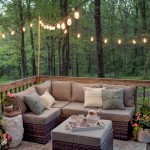```html
Wall Art Home Decor: Transforming Spaces with Visual Expression
Wall art home decor encompasses a wide range of artistic mediums and stylistic approaches employed to enhance the aesthetic appeal of interior spaces. It serves as a crucial element in interior design, contributing significantly to the overall ambiance, personality, and perceived value of a home. The selection and arrangement of wall art require careful consideration, taking into account the existing architectural style, color palette, furniture arrangement, and personal preferences of the homeowner or occupant.
The primary objective of wall art is to create visual interest and establish a focal point within a room. It can effectively break up monotonous expanses of blank walls, introduce texture and depth, and even influence the perceived size and proportions of a space. The impact of well-chosen wall art extends beyond mere decoration; it can evoke emotions, spark conversation, and reflect the individuality and passions of the inhabitants.
The market for wall art home decor is vast and diverse, catering to a spectrum of tastes and budgets. Options range from original paintings and limited-edition prints to mass-produced posters and digital artwork. Furthermore, the materials used in wall art are equally varied, including canvas, paper, wood, metal, glass, and even textiles. This extensive selection allows homeowners to personalize their living spaces and create a unique reflection of their individual style.
Key Considerations in Selecting Wall Art
The selection of appropriate wall art involves several critical considerations. Ignoring these factors can result in a discordant and unappealing aesthetic. Understanding these key points is essential for achieving a harmonious and visually pleasing interior design.
Firstly, the scale and proportion of the artwork must be appropriate for the size of the wall and the surrounding furniture. A small piece of art on a large wall may appear insignificant and lost, while an oversized piece in a small room can feel overwhelming and claustrophobic. A general rule of thumb is to select artwork that is approximately two-thirds to three-quarters the width of the furniture it is displayed above. For example, if a sofa is 8 feet wide, the artwork should ideally be between 5 and a half to 6 feet wide.
Secondly, the color scheme of the artwork should complement the existing color palette of the room. This does not necessarily mean that the colors must match exactly, but they should harmonize in a cohesive and visually appealing manner. Consider using a color wheel to identify complementary or analogous colors that will create a sense of balance and visual interest. Alternatively, a neutral-toned artwork can serve as a subtle backdrop, allowing other bolder elements in the room to take center stage.
Thirdly, the style of the artwork should align with the overall aesthetic of the room. A modern, minimalist room would likely benefit from abstract art or geometric prints, while a traditional, formal room might be better suited to classical paintings or landscape scenes. Mixing styles can be effective, but it requires a careful eye and a clear understanding of design principles. Consider the existing furniture, architectural details, and decorative accessories to ensure that the artwork complements the overall style of the room.
Types of Wall Art and Their Applications
The diverse range of available wall art allows for considerable flexibility in enhancing various interior spaces. Each type offers unique characteristics that can be leveraged to create specific effects and moods.
Paintings, whether original works or high-quality reproductions, offer a timeless and sophisticated appeal. They can range from realistic portraits and landscapes to abstract compositions and contemporary designs. Paintings are particularly well-suited for formal living rooms, dining rooms, and bedrooms, where they can serve as a focal point and add a touch of elegance.
Prints are a more affordable alternative to original paintings, offering a wide variety of styles and subjects. Prints can be framed or displayed as canvases, allowing for customization to suit individual preferences and budgetary constraints. Photographic prints are especially popular, capturing stunning landscapes, portraits, and abstract imagery. Prints are versatile and can be used in virtually any room, from living rooms and bedrooms to kitchens and bathrooms.
Wall decals and murals offer a more contemporary and customizable approach to wall art. These removable adhesives can be used to create intricate designs, patterns, or even full-scale murals. Wall decals are particularly well-suited for children's rooms, playrooms, and home offices, where they can add a playful and personalized touch. Murals can transform entire walls into immersive works of art, creating a dramatic and impactful visual statement.
Textile art, such as tapestries, woven wall hangings, and macrame pieces, adds texture and warmth to a space. These pieces can range from simple geometric patterns to intricate designs and can be made from a variety of materials, including wool, cotton, silk, and linen. Textile art is particularly well-suited for bedrooms, living rooms, and hallways, where it can soften the hard lines of the architecture and create a cozy and inviting atmosphere.
Finally, sculptural wall art, including metal sculptures, ceramic tiles, and wooden carvings, offers a three-dimensional element that can add depth and visual interest to a space. These pieces can range from small, subtle accents to large, statement-making installations. Sculptural wall art is particularly well-suited for entryways, living rooms, and offices, where it can serve as a conversation starter and add a touch of sophistication.
Arranging Wall Art for Optimal Impact
The arrangement of wall art is just as important as the selection itself. A poorly arranged collection can appear cluttered and disjointed, while a well-arranged collection can create a sense of harmony and visual balance.
When hanging a single piece of art, the general rule is to hang it at eye level. The center of the artwork should be approximately 57 to 60 inches from the floor, which is considered the average eye level for most people. This ensures that the artwork is easily visible and appreciated.
When hanging a group of artworks, consider using a gallery wall arrangement. This involves grouping multiple pieces of art together on a single wall, creating a cohesive and visually appealing display. There are several different approaches to creating a gallery wall, including symmetrical arrangements, asymmetrical arrangements, and grid arrangements. Choose an arrangement that complements the style of the artwork and the overall aesthetic of the room.
Spacing is also crucial in the arrangement of wall art. The distance between each piece of artwork should be consistent and proportionate to the size of the art. A general rule of thumb is to leave between 2 and 4 inches between each piece. This allows each artwork to be viewed individually while still maintaining a sense of cohesion within the group.
Finally, consider the lighting when arranging wall art. Natural light is ideal, but artificial lighting can also be used to highlight and enhance the artwork. Avoid placing artwork in direct sunlight, as this can cause fading and damage over time. Use spotlights or track lighting to direct light onto the artwork, creating a dramatic and visually appealing effect. The appropriate lighting can significantly enhance the visual impact and perceived value of wall art.
```
Writing Flowers Art Print On Wood Wall Pallet Home Decor Flower Painting Watercolor

It S So Good To Be Home Set Of 2 Posters Minimalist Art Typography Bedroom Wall Romantic Decor

Wall Writing Phoenixwalldecor

Writers Room Decor Typewriter Home Gift For Writer Office Creative Writing Class Wall Art Typing

Decal Wall Sticker Writing Is Love Bedroom Quote Kids Teen Boy Girl Home Decor Picture Art 12x18 Inches

Wall Art Stickers Family Tree Home Love Quote Words Phrases Decor Text

Girl Writing No Act Of Kindness Street Art Canvas Prints Wall Hom Unixcanvas

Canvas Wall Art For Living Room Ic Calligraphy Abstract Oil Painting On Unframed Decorations Hand Writing Prints Home Decoration Decor Porch Bedroom Office Com

Living Room Gallery Wall Love Grows Wild

Lamodahome Exclusive Wash Your Worries Away Written Metal Wall Decor Durable Artistic Art For Home And Office Perfect Any Interior Design Aesthetic Com







